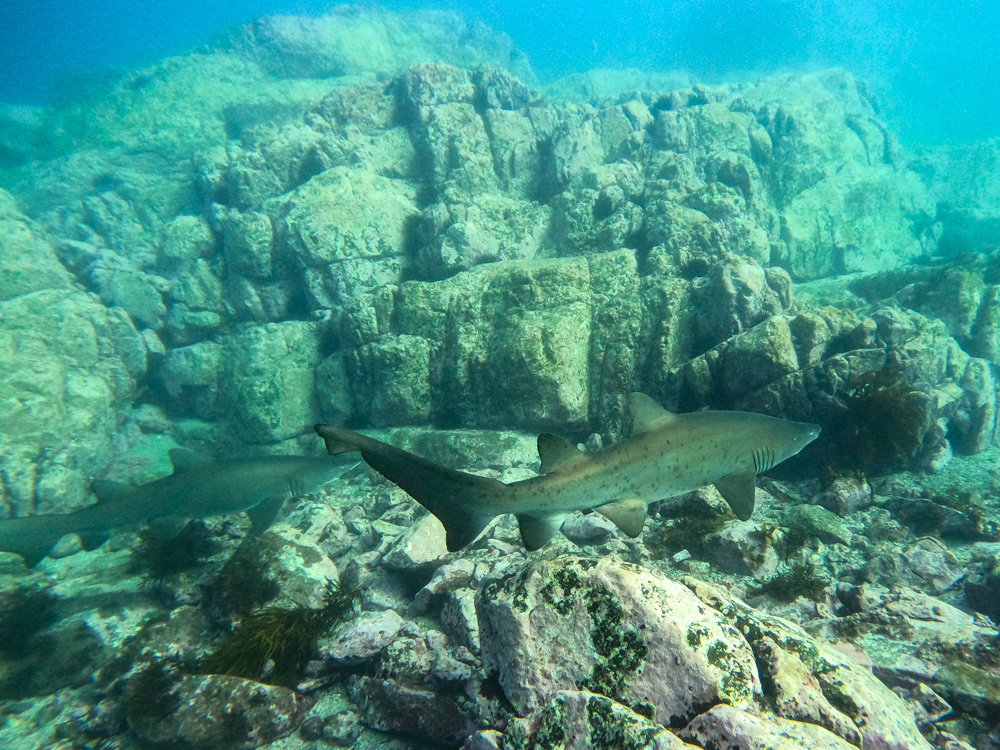For snorkelers and divers, the idea of encountering sharks in Australia triggers both excitement and some healthy anxiety. We cannot seem to get enough of these fascinating species. From the fearsome Great Whites to the gentle Whale Sharks, there’s a whole underwater shark society waiting to be explored.
The life of sharks
Let’s start at the beginning – the shark lifecycle. Most sharks, including many species found in Australia, go through a process known as ovoviviparity. In plain English, this means their eggs hatch inside the mother’s body. Once they’ve developed enough, they’re born live and swim off into the sea, miniature versions of their parents.
One of the most incredible shark events in Australia is the annual Whale Shark migration at Ningaloo Reef in Western Australia. Every year from April to July, these gentle giants congregate here to feed and mate. This offers an awe-inspiring spectacle for locals and visitors alike.
Close Encounters: Snorkelling with Sharks
Don’t be too quick to let fear spoil your underwater adventures. Despite their reputation, most sharks are quite harmless to humans, and snorkelling with them is an experience like no other. Australia’s clear waters offer opportunities to snorkel with several shark species, but the most popular is perhaps the Whale Sharks of Ningaloo Reef.
Swimming alongside these majestic creatures, you’ll be struck by their size (they can grow up to 12 meters long) but also their peaceful nature. Remember, they’re plankton eaters, not people eaters! For those seeking a smaller-scale adventure, snorkeling with Port Jackson and Wobbegong sharks in places like Sydney Harbour is an equally rewarding experience.
Identifying Features: Shark Anatomy 101
Each shark species has a unique set of anatomical features. Great Whites are known for their torpedo-shaped bodies and powerful tails, which allow them to swim at high speeds. They also possess a distinct conical snout and, of course, their notorious rows of sharp teeth.
Bull Sharks, on the other hand, have a broader, rounded snout and a sturdy build. The Tiger Shark can be recognised by the distinctive dark stripes on its body. Whale Sharks have a unique pattern of white spots and stripes on their grey-blue bodies. Their their wide, flat heads make them easily distinguishable from other species.
Distribution and Conservation: Our Role in Their World
Australia is a global hotspot for shark biodiversity, with over 180 species calling its waters home. These range across its vast coastline, from the temperate south to the tropical north. However, many of these species, including the iconic Great White, are under threat due to issues such as overfishing and habitat loss.
Thankfully, Australia is at the forefront of shark conservation, with initiatives ranging from protective legislation to shark tagging programs. Public education about sharks, their roles in the ecosystem, and their importance to marine biodiversity also plays a key part in conservation efforts.
Understanding Behaviour and Character: More Than Just Predators
Sharks are often misunderstood as mindless predators when they have unique behaviours and characteristics. Great Whites, for example, are highly intelligent and curious creatures. Bull Sharks are known for their adaptability, capable of living in both salt and freshwater.
The shy Grey Nurse Shark is actually a placid, slow-moving species, despite its somewhat menacing appearance, while the Tiger Shark is known for being a bit of a scavenger, known to eat just about anything!
Reefranger’s Perspective
Over the years I have had the opportunity to snorkel with a wide variety of sharks. From the massive Whale Shark, to the elusive Grey Nurse Shark. Through understanding and respecting these incredible creatures, we can learn to coexist and ensure their survival for future generations. So, next time you’re near the Australian waters, take a moment to appreciate the beauty, diversity, and complexity of our finned friends below the surface. You’ll be surprised by what you might learn.
Now, who’s ready for a snorkelling adventure? Always remember to respect marine life, keep our oceans clean, and explore with a sense of wonder. Happy swimming, reefers!
